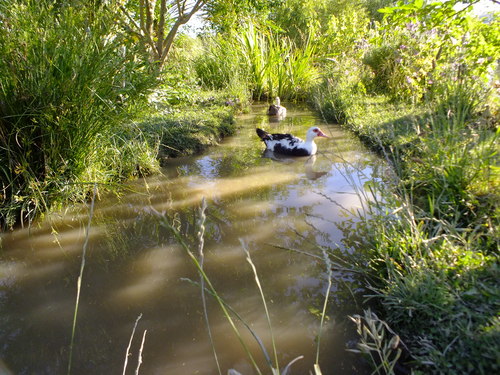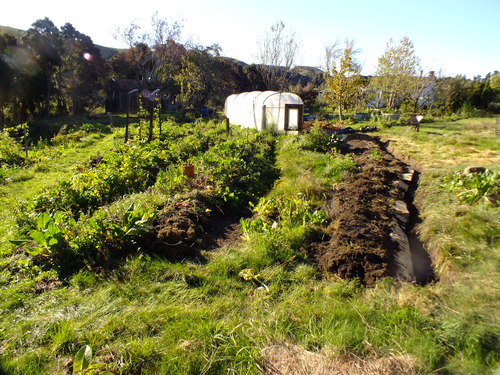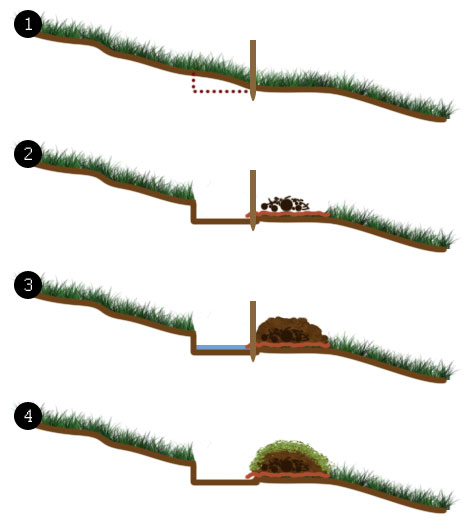A practical guide to water harvesting for productive, natural gardening
Water is the source and key to life on Earth. As gardeners and assistants to nature, we aim to retain a suitably moist environment conducive to life. The best way to do this is capture the precipitation that falls on site and up slope and store it right where it's needed, in the soil.
Introducing the swale
A swale is a depression or ditch that follows the contour of the land like the lines used on topographical maps to illustrate elevation and gradient.
As with a rice terrace, when seen from above the line of the swale may curve across the surface of the land but when viewed edge on it will be perfectly horizontal and level allowing water to pool from end to end.
Objectives
The primary objective of a swale is to intercept surface run-off that would otherwise be lost and retain it in the landscape. During rainfall events, once the soil is saturated, additional precipitation does not soak into the soil and instead 'spills' off the surface under the force of gravity and runs downhill perpendicular to the contour lines.
Place a swale in the path of the surface water and it is halted, spread sideways forming a long skinny 'pond'. From here the water slowly seeps into the ground, travelling much more slowly and remaining accessible to all the plant roots that it encounters along the way.
The swale helps hold water from rainy periods, minimising surface run off and erosion and slowly releasing the stored moisture and dissolved nutrient to plants located downhill.
Construction process
-
The swale line is marked out along contour using the A-Frame and pegs
-
Shallow trough is dug along the pegged out line
-
Dirt is dug from the trench and piled on the downhill side.
-
Optionally add water to help identify and rectify lumps and hollows in the trench.
-
Plant and mulch the disturbed soil.
Considerations
The scale and volume / capacity of the swale will be determined by soil composition, slope of the land the swale is cutting through and the anticipated heaviest rainfall event.
Always design for overflow. Plan a route for excess water once the swale is full. Overflow is best managed by capturing it in a down slope swale or by directing it to an existing sink with a gently sloping swale, terrace or drain.
Additional improvements
The soil water holding capabilities and capacity can be improved by increasing the volume of organic matter in the soil. This can be achieved by either adding mulch to the surface or by mixing organic mater through the soil with mechanical or biological processes. By growing deep rooted plants that produce a large volume of biomass in a short time and then chopping this and leaving it to decompose in place there is deep injection of root mater and surface mulching.



